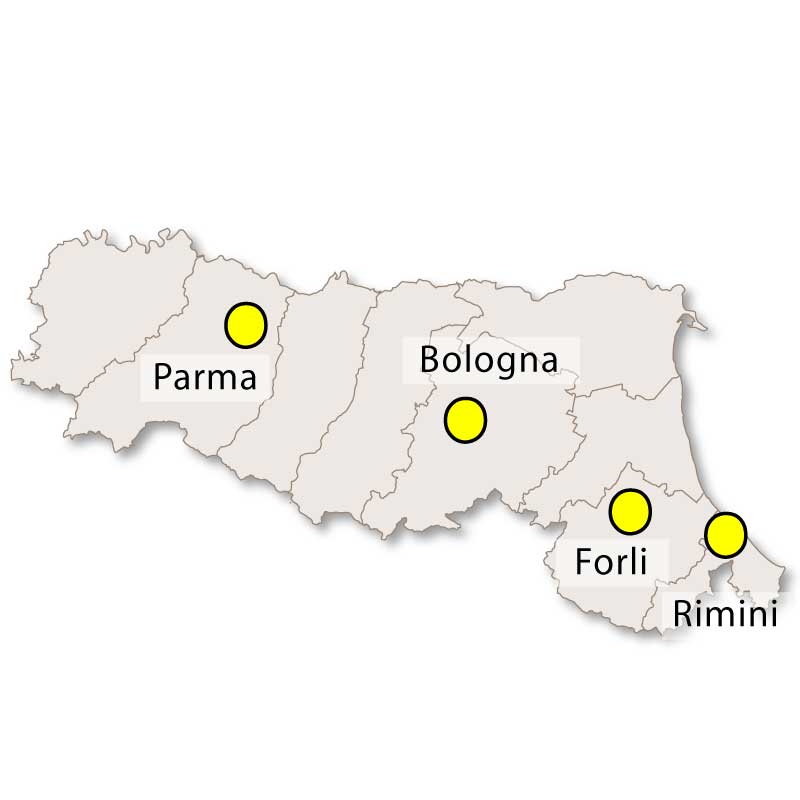
In the heart of Emilia-Romagna’s green hills lies Brisighella, a stunning medieval village that blends natural beauty, rich history and authentic Italian life.
Surrounded by vineyards, olive groves and chalky hills, it is a place where time slows and the traditions of past centuries are still visible in everyday life.
This ancient hill town is not only beautiful but deeply atmospheric, with cobbled streets, stone arches and a peaceful rhythm that feels a world away from modern chaos.
Brisighella has long been a hidden gem of the Ravenna province, increasingly attracting those in search of quiet authenticity, wellness and cultural depth.
Brisighella’s story begins in the 13th century, when a fortress was built on the hill above the village to defend the region from enemy invasions and local rivalries.
The imposing Rocca Manfrediana still stands today, offering panoramic views over the Lamone Valley and the rolling green ridges of the Apennine foothills.
Over the centuries, the town developed under the rule of noble families, religious orders and even the Papal States, each leaving behind buildings and traditions.
Its strategic location on the Via Faentina, which connected Faenza to Florence, made Brisighella an important commercial stop for travelers and traders crossing the Apennines.
The identity of Brisighella is defined by its three iconic hills, each crowned with a landmark: the fortress, the clock tower and the Monticino sanctuary.
The Rocca Manfrediana, built in the 14th century and expanded by the Venetians, offers visitors a glimpse into medieval military architecture and strategy.
Nearby, the 19th-century clock tower stands boldly on a white rock, its silhouette now one of the most photographed images of the village.
On the third hill rises the peaceful Sanctuary of Monticino, a pilgrimage site that holds spiritual significance and offers incredible views at sunset.
One of Brisighella’s most fascinating features is the Via degli Asini, or Donkey's Alley, an arched and elevated covered street built directly into the town’s structure.
This passage was once used by donkey drivers who transported gypsum from local quarries and needed shelter from the weather as they moved through the village.
With its distinctive uneven windows and curved brick arches, the Via degli Asini is a rare and beautiful example of medieval urban planning and adaptation.
Today, it serves as a romantic walkway and a symbol of Brisighella’s ability to preserve and celebrate its historical roots without becoming a museum piece.
Brisighella is internationally known for producing some of Italy’s finest extra virgin olive oil, protected by the DOP label and celebrated in both taste and tradition.
The Brisighello olive variety, unique to this area, yields an oil of deep green color, low acidity and a rich, slightly bitter flavor cherished by chefs and connoisseurs.
Food in Brisighella reflects the region’s rural character and includes specialties like handmade pasta, aged cheeses, grilled meats and seasonal vegetables.
Weekly markets, festivals and small family-run trattorias make eating here a deeply local experience where everything is fresh, homemade and lovingly prepared.
In addition to its cultural attractions, Brisighella is a destination for wellness thanks to its natural thermal springs and therapeutic mud treatments.
The local spa complex, Terme di Brisighella, offers a range of health-focused services, from respiratory therapies to relaxing massages and mineral-rich baths.
The clean mountain air, slow lifestyle and deep connection to nature make the town a haven for both mental and physical rejuvenation.
Many visitors combine hiking or biking in the nearby hills with spa treatments and local cuisine, creating a holistic and nourishing escape from city stress.
Brisighella is surrounded by the Parco della Vena del Gesso Romagnola, a protected area known for its white chalk cliffs, fossils and rare flora.
This unique geological zone offers excellent walking and cycling opportunities, with trails suitable for both casual strollers and serious adventurers.
The Sentiero degli Abissi is a favorite among hikers, winding through gypsum caves, wildflower meadows and scenic viewpoints above the valley floor.
Mountain bikers and road cyclists will find a network of well-marked routes that connect Brisighella with neighboring hill towns and natural landmarks.
Brisighella’s calendar is rich with events that celebrate its food, traditions and artistic spirit, often transforming the quiet town into a vibrant gathering place.
Highlights include the Olive Oil Festival in late November, where visitors can taste the freshest oil and learn about its production and heritage.
In summer, the medieval festival brings the streets to life with costumes, music and performances that recreate the village’s distant past with enthusiasm and detail.
Art exhibitions, open-air concerts and theatrical performances take place throughout the year, often in historic venues like the fortress or town square.
Brisighella is located between Faenza and Florence and is easily accessible by car or train, with a small railway station just a short walk from the historic center.
The scenic Faenza-Florence railway line is considered one of Italy’s most beautiful train journeys, winding through forests, valleys and hilltop towns.
The best time to visit Brisighella is spring through autumn, when the weather is mild and outdoor activities are at their peak.
Autumn is especially rewarding for food lovers, with olive harvesting, truffle hunting and seasonal menus showcasing the best of the regional cuisine.
What makes Brisighella unforgettable is not only its landmarks or landscapes but the feeling of being in a place that has preserved its soul across centuries.
It is a village where life still follows the rhythms of nature, where people greet you in the streets and where every corner tells a story worth listening to.
Whether you come for a day or a week, the gentle pace, exquisite flavors and poetic beauty of Brisighella will linger in your memory long after you leave.
In the province of Ravenna, this small hill town offers a powerful reminder that true luxury lies in time, space and simplicity shared with care and pride.

More Details



